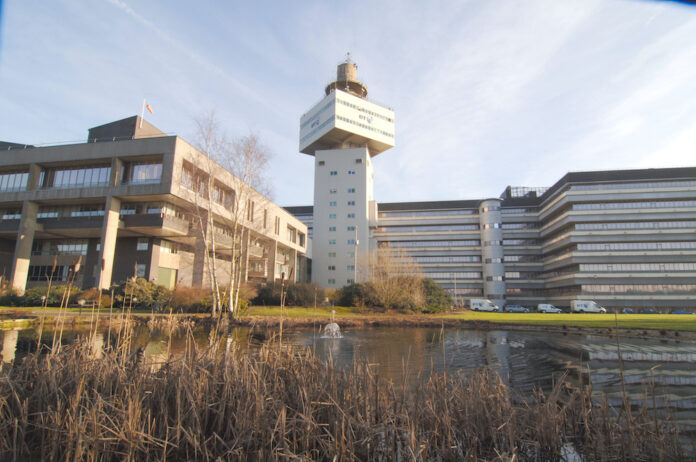The tech is designed to boost capacity and enable faster downlink speeds in areas of dense population
BT Group, Nokia and Qualcomm have carried out what they say is the first test of 5G carrier aggregation using five components in Europe. Carrier aggregation is designed to increase capacity and downlink speeds in areas of high demand.
The trial took place at BT’s R&D base, Adastral Park in the east of England (pictured), on live spectrum with a Qualcomm Snapdragon modem and Nokia’s 5G AirScale portfolio equipment. BT said the test is part of its preparations for launching its standalone 5G network later this year, under its EE brand.
The test’s downlink speeds hit a high of 1.85Gbps by aggregating three frequency-division duplexing (FDD) carriers with two time-division multiplexing (TDD) carriers which had a combined bandwidth of 150MHz.
The FDD carriers were NR2600 (30MHz), NR2100 (20MHz), NR1800 (20MHz) and the MDD were both NR3600 (40+40MHz).
Carrier aggregation can combine all available mid-band radio spectrum to provide 5G Standalone devices with a reliable high-speed connection when required.
EE’s 5G Standalone network will also be able to use a “low frequency sixth carrier to provide a superior experience in more places, including indoors”, apparently.
The operator’s Chief Networks Officer, Greg McCall, has publicly stated that BT would not launch 5G Standalone until it was satisfied that the services it support differentiates the operator in the market.
In the statement announcing the successful trial, McCall said BT intended to “further…the benefits of carrier aggregation in delivering greater throughput and speeds to customers. This is particularly important as more and more devices come to market with 5CC [five carrier component] CA [carrier aggregation] capabilities.
“We are focused on maximising our spectrum assets to deliver the very best experience to our customers with that in mind.”
Last August, BT with partners Ericsson and MediaTek, successfully trialled a wideband frequency division duplex (FDD) radio carrier for 5G services, over 20MHz, in EE’s 2.6GHz spectrum.
Last year, BT Group and Nokia also successfully demonstrated 4CC CA in 5G SA downlink with concurrent 2CC CA in 5G SA uplink.




